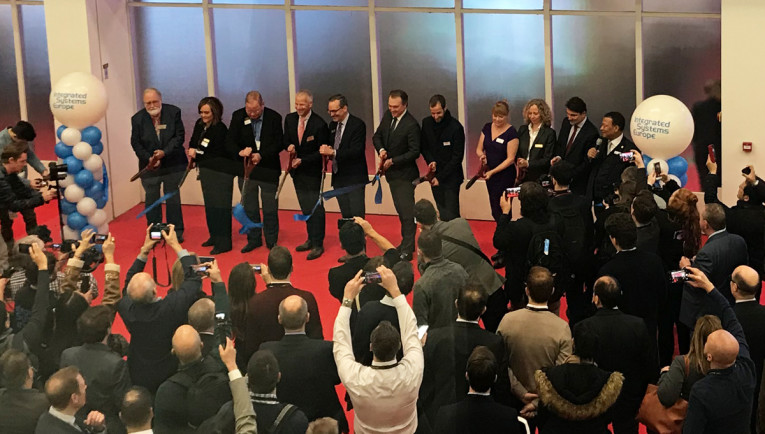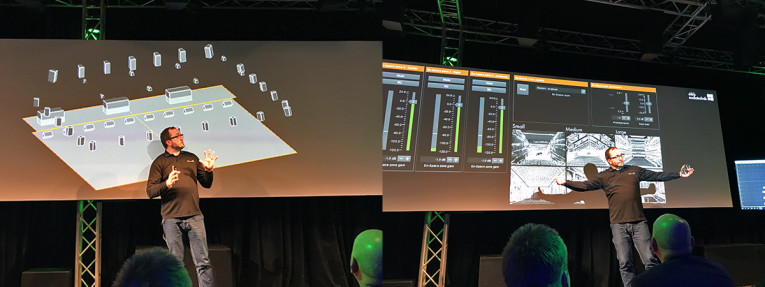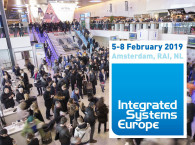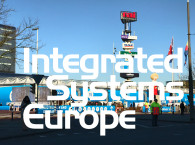Sure enough, when Mike Blackman, Integrated Systems Events Managing Director, addressed the press before the opening ceremony, he confirmed that pre-registrations for the show were already at a new record, more than 73,000, with 32% of those visitors being first timers! And the show was clearly larger, with 1,301 exhibitors filling every corner of the available space, with the US representing the third largest number of companies (165), just below China and Germany. And visitors to ISE come from all parts of the world. The US had once again more professionals attending the show, even with the fact that ISE is promoted as a joint venture with the Audiovisual and Integrated Experience Association (AVIXA) and the Custom Electronic Design and Installation Association (CEDIA), both of which promote their own shows in the US.

Final attendance figures confirmed finally that 81,268 registered visitors made ISE 2019 once again the largest ever, and the world's largest trade show for the professional AV and electronic systems industry. And as Blackman explained, even with the full commitment of the RAI and the city of Amsterdam adding increased floor space (which will be expanded once again with an extra hall in 2020), the promoters have been forced to deny requests from companies to increase their booths. More importantly, sentiment about the show is as positive as ever, and companies keep rebooking space even before the show is over.
So, why is Integrated Systems Europe such a successful show? Sometimes when we look at trade shows it's easy to forget that the key to the format's success is in the name: "trade". When there's sellers and people who want/need to buy there's trade. And when trade is strong, success comes naturally.
Unlike some trade show organizers who have handled their "events" as institutions and cultural happenings, ISE always focused on getting business done, and have repeatedly consulted with the exhibitors and visitors on what they should do to improve their experience at the trade show.

Integrated Systems Events, the promoters of the ISE trade show have worked hard to institute the educational, informational, and inspirational forums, and have understood that for trade to flow you need to complete the networking circles, from sellers to buyers, specifiers and end users (and even the specialized press, which is welcomed almost as shareholders, not just visitors).
In this specific case, with ISE, the promoters also understood particularly well that they were dealing with an expanded format where vendors/manufacturers and service providers were in need of an event to meet with the integrators/installers, and that by opening access to multiple verticals that had previously "siloed" themselves in closed circles (audio, video, lighting, control, digital signage, communications...) the event would quickly flourish and propel the evolution of the market to truly integrated systems. Not according to products, but according to its function and scope: residential, corporate, buildings, public spaces, and cities.
ISE still has space to grow, and the move to Barcelona in 2021 (yes, there's still another year in Amsterdam before the exodus...), will depend on the expansion of this successful formula attracting new verticals. Apart from attracting more audio and AV companies, there's a lot of room to grow in lighting and building automation, security, and communications, including attracting the big IT/networking technology players. And it's not a coincidence that ISE has decided to migrate to Barcelona, happening just a few days before the largest European technology event that also uses the modern Fira de Barcelona facilities: the GSMA Mobile World Congress (MWC). In a way, it's like the world of wired gets closer to the wireless world.

There's another key factor that's vital to the trade show success equation. Technology evolution.
This is the one factor that makes me endure the extensive traveling and justifies staying weeks away from family, and enduring economy class seats in crammed planes. Because there are exciting technology changes happening and those changes are closely linked with new business opportunities. In the case of ISE that's clearly the evolution in displays, collaboration, control interfaces and, transversal to all systems, IP convergence.
Shows like CES, ISE, and MWC are exciting platforms for technology evolution and understanding the business opportunities that come with it.
Much like the electronica and Embedded World electronics shows in Munich, Germany, are thriving because they are closely linked with exciting opportunities in robotics, automotive, and the IoT, there's a lot to be excited with what's happening at consumer shows such as CES, with voice interfaces, wearables, hearables, connected vehicles, wireless multimedia, displays, and much more; at ISE with IP integration, smart automation, and immersive AV experiences; and MWC with the evolution toward 5G, again IoT, and connected personal/mobile devices in general, to just mention a few dominant topics (there's much more in health, retail, and the digital economy at each of these trade shows).
Buyers and sellers attending these shows, need to be aware and understand the challenges and opportunities of those technology trends. They need to be there first, and attending trade shows where all parties converge, allows exactly that.

Focusing on audio, I think there is a lot happening in terms of technology evolution, as we've been reporting. At ISE, the dominant topic was again IP networking and integration, even if most of the audio companies attending are mostly working on offering a "better mouse-trap," with gradually improving electroacoustic designs, better and more efficient drivers and amplifiers, and so forth. A few, are strongly focused on the future, and getting distributed digital signal processing and networking interfaces to work on their systems... connecting the pieces.
Probably, the only thing that needs to be improved for ISE when it moves to Barcelona, will be changing the name of the event to Integrated Systems Expo :)







